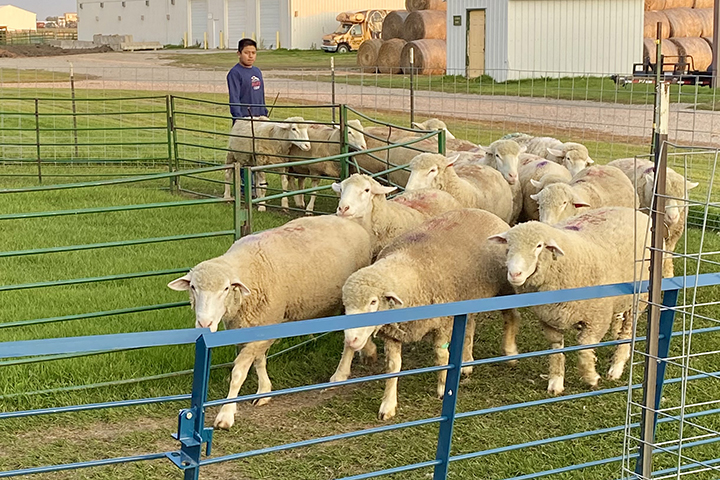Study Shows Exercise is Good for Pregnant Ewes

Research conducted at NDSU shows that exercise is beneficial for pregnant ewes.
As part of this research, 16 ewes in the last trimester of pregnancy were exercised by walking 30 minutes every other day until lambing while another 16 pregnant ewes remained in their pens during the same time period.
The researchers found the ewes that didn’t exercise didn’t produce as much colostral immunoglobulins as the ewes that exercised. Ensuring that newborn lambs get enough good-quality colostrum through their mother’s milk is vital because it contains antibodies and other immune factors necessary to protect lambs from disease until their own immune system is totally functional.
“The research supported the conclusion that exercise enhanced colostrum quality, which is critically important for newborn lamb health,” says Gerald Stokka, NDSU Extension veterinarian and principal investigator on this research project.
This research is breaking new ground.
“This research study may have been one of the first of its kind that has specifically evaluated how ‘exercise’ in pregnant sheep is important for colostrum antibody levels,” says Juan Gavette, a graduate student who designed and led the study. “Similar to how humans are advised to exercise during pregnancy for muscle toning and controlling excessive gestational weight gain, the ability for farm animals to move around during gestation is also important.”
The researchers also found that the ewes that got exercise had less gestational weight gain and ate less feed, while the ewes that weren’t walked gained weight and ate more feed.
“More controlled eating behaviors and gestational weight gain from exercised ewes did not impact lamb birthweight or performance, indicating that exercise posed no risk to the newborn while benefiting the ewe and colostrum,” Gavette says. “Lambs from exercised ewes had slightly greater antibody levels in their serum after colostrum consumption and had far greater serum protein after colostrum consumption, compared to lambs born from ewes that did not exercise.”
FOR MORE INFORMATION:
Gerald Stokka, 701-231-5082, gerald.stokka@ndsu.edu


